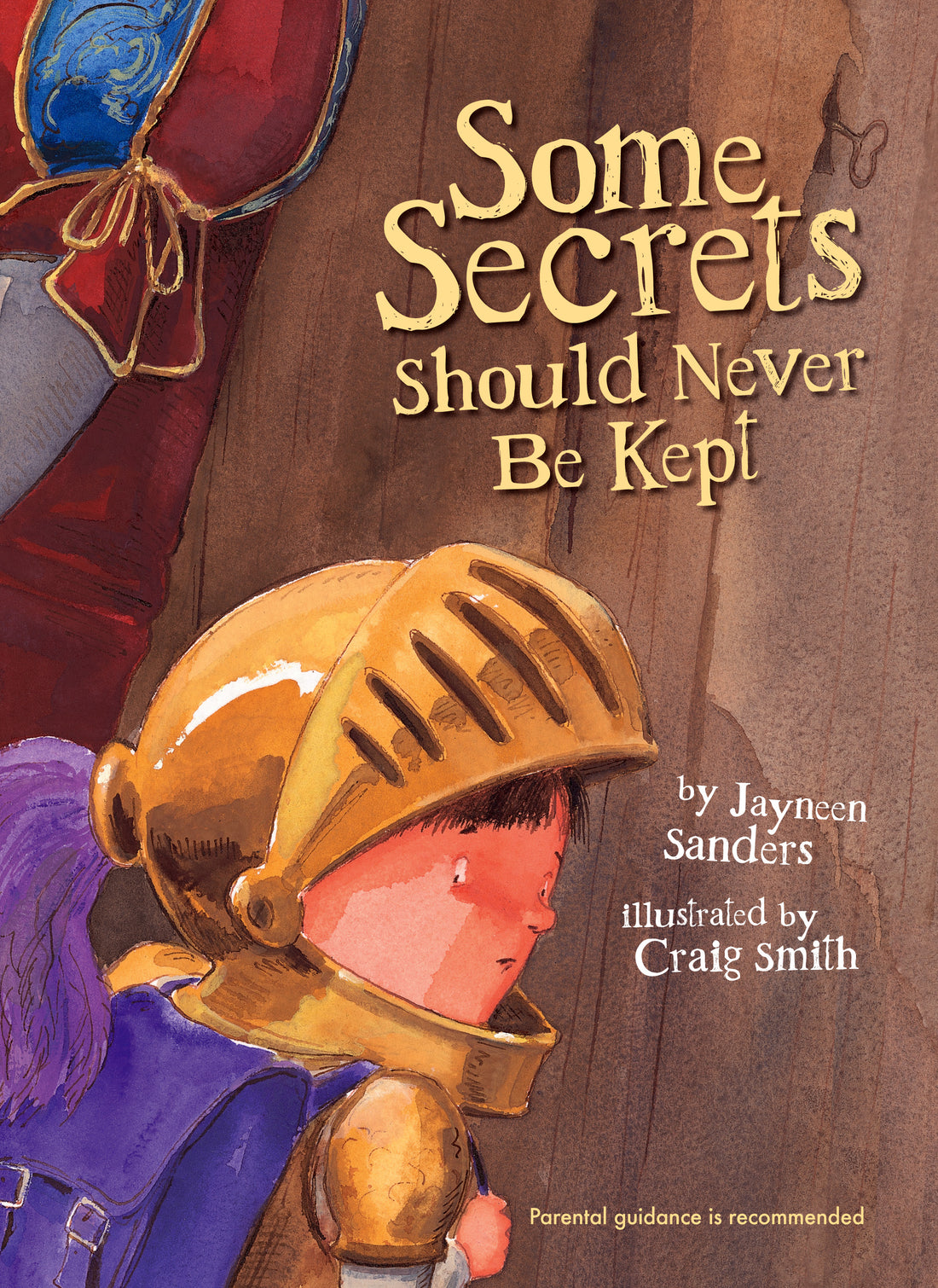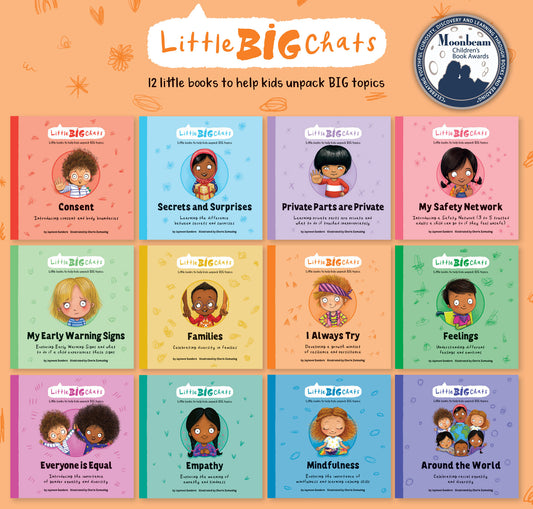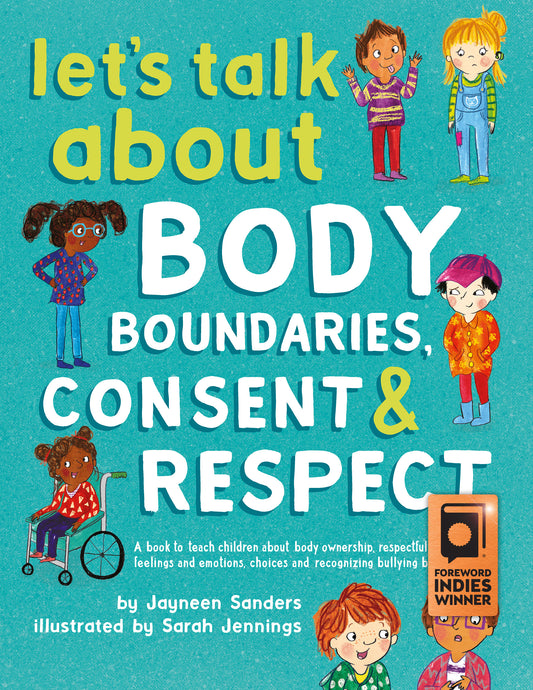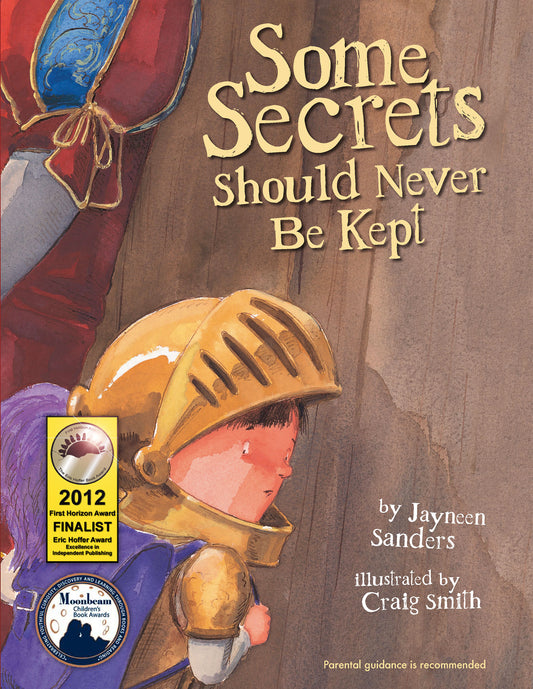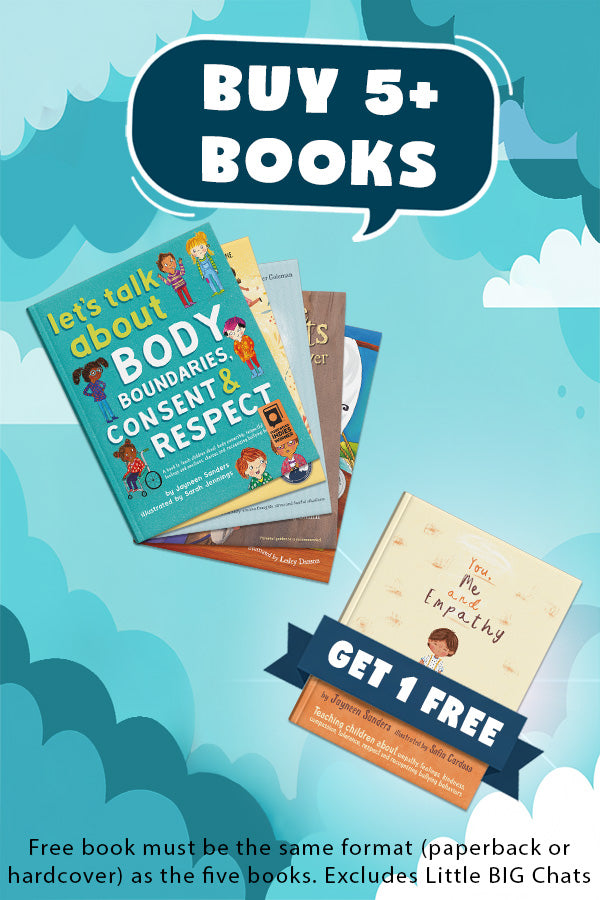Keeping Kids Safe from Sexual Abuse
1. Some Secrets Should Never Be Kept
by Jayneen Sanders

Some Secrets Should Never Be Kept is a beautifully illustrated picture book that sensitively broaches the subject of keeping our children safe from inappropriate touch. We teach water safety and road safety but how do we teach 'body safety' to young children in a way that is neither frightening nor confronting? This book is an invaluable tool for parents, caregivers, teachers and health professionals. The comprehensive notes to the reader and discussion questions at the back of the book support both the reader and the child when discussing the story. Suitable for ages 3 to 12 years. A free 'body safety' song, supporting teacher's pack and other useful resources are also available from: www.somesecrets.info
Available in English, Spanish, French, Italian, German, Japanese and Chinese.
2. My Body Belongs to Me
by Jill Starishevsky
Without being taught about body boundaries, a child may be too young to understand when abuse is happening—or that it’s wrong. This straightforward, gentle book offers a tool parents, teachers, and counselors can use to help children feel, be, and stay safe. The rhyming story and simple, friendly illustrations provide a way to sensitively share and discuss the topic, guiding young children to understand that their private parts belong to them alone. The overriding message of My Body Belongs to Me is that if someone touches your private parts, tell your mom, your dad, your teacher, or another safe adult.
Sex Education
3. It’s Not the Stork!
by Robie H. Harris
Young children are curious about almost everything, especially their bodies. And young children are not afraid to ask questions. What makes me a girl? What makes me a boy? Why are some parts of girls' and boys' bodies the same and why are some parts different? How was I made? Where do babies come from? Is it true that a stork brings babies to mommies and daddies? It's Not The Stork! helps answer these endless and perfectly normal questions that preschool, kindergarten, and early elementary school children ask about how they began.
4. Where Did I Come From?
by Peter Mayle

Where Did I Come From? covers all the basic facts from love-making, orgasm, conception and growth inside the womb, through to the actual birth day. It names all the names and shows all the important parts of the body.
Where Did I Come From? tells the facts of life as they are - without any nonsense, and in a way that children can understand and parents enjoy.
Grief/Death
5. A Place in my Heart — Understanding Bereavement
by Annette Aubrey
Through rhyming, the author deals sensitively with bereavement reassuring young readers that emotions they may be experiencing are ‘normal’ and shared by others.
6. Badger’s Parting Gifts
by Susan Varley

Badger is so old that he knows he will soon die. He tries to prepare his friends for this event, but when he does die, they are still grief-stricken. Gradually they come to terms with their grief by remembering all the practical things Badger taught them, and so Badger lives on in his friends' memories of him.
7. Isaac and the Red Jumper
by Amanda Seyderhelm
Picture book for 5-12 years about child bereavement. To be read by a parent, counsellor, teacher to a bereaved child. Full colour illustrations, and a list of questions at the back of the book to help children heal their grief process using creative activities. Isaac is heartbroken when his best friend Freddie dies. His house freezes, and his red jumper turns grey with grief. His friends try to console him but it's only after Isaac receives a special visit from Freddie that he understands love and friendship last forever, and are alive in spirit. Isaac and the Red Jumper will appeal to anyone who is bereaved, and is looking for a creative way to heal. Amanda Seyderhelm is a PTUK Certified Therapeutic Play Practitioner.
Mental Illness
8. Can I Catch It Like a Cold?
By Centre for Addiction & Mental Health
In simple, straightforward language, the book explains what depression is and how it is treated. It also prepares a child for working with a helping professional. And perhaps most important, it reassures a child that he or she is not alone.
Divorce/Separation
9. Mum and Dad Glue
by Kes Gray
A little boy tries to find a pot of parent glue to stick his mum and dad back together. His parents have come undone and he wants to mend their marriage, stick their smiles back on and make them better. This rhyming story is brilliantly told with a powerful message that even though his parents may be broken, their love for him is not.
10. Dinosaurs Divorce
by Laurene Krasny Brown
Dinosaurs Divorce will help children understand divorce and what it means.
Trauma/Violence/Anxiety
11. How Are You Feeling Today Baby Bear?
by Jane Evans
A gentle story to help children aged 2 to 6 years who have lived with violence in their home. Baby Bear lives in a home with the Big Bears, and loves to chase butterflies and make mud pies - they make Baby Bear's tummy fill with sunshine. Then, one night, Baby Bear hears a big storm downstairs in the house and in the morning, Baby Bear's tummy starts to feel grey and rainy. How will such a small bear cope with these big new feelings? This sensitive, charming storybook is written to help children who have lived with violence at home to begin to explore and name their feelings. Accompanied by notes for adults on how to use each page of the story to start conversations, it also features fun games and activities to help to understand and express difficult emotions. It will be a useful book for social workers, counsellors, domestic violence workers and all grown-ups working with children.
12. A Terrible Thing Happened
by Margaret Holmes
This gently told and tenderly illustrated story is for children who have witnessed any kind of violent or traumatic episode, including physical abuse, school or gang violence, accidents, homicide, suicide, and natural disasters such as floods or fire. An afterword by Sash a J. Mudlaff written for parents and other caregivers offers extensive suggestions for helping traumatized children, including a list of other sources that focus on specific events.
Note from Jane: I have used this book many times with children from very young up to 10 to 11 years as a way to let them fill in the blanks using gentle suggestions of possible feelings, often helping children who lack the names for their unprocessed feelings. The book can also be used with children who are dealing with grief.
13. The Huge Bag of Worries
by Virginia Ironside

Wherever Jenny goes, her worries follow her - in a big blue bag. They are there when she goes swimming, when she is watching TV, and even when she is in the lavatory. Jenny decides they will have to go. But who can help her?
Note from Jane: A great book to use with anxious children as it helps sort worries through and make them seem more manageable. It emphasizes that we all have worries and what to do about them. I use this with older children too, as it always makes me get my own worries in perspective!
14. When Worries Get Too Big
by Kari Dunn Buron

More than any other issue, 'losing control' can cause major problems for children. Through the irresistible character of Nicholas, this book gives young children an opportunity to explore with parents or teachers their own feelings as they react to events in their daily lives while learning some useful relaxation techniques. Children who use the simple strategies presented in this charming book, illustrated by the author, will find themselves relaxed and ready to work or play.
15. Sitting Still Like a Frog (mindfulness)
by Eline Snell

Simple mindfulness practices to help your child deal with anxiety, improve concentration and handle difficult emotions.
Please note: two new empowering books for young children from the authors of this blog.
No Means No!: Teaching children about personal boundaries, respect and consent; empowering kids by respecting their choices and their right to say, 'No!'
by Jayneen Sanders

No Means No!' is a children's picture book about an empowered little girl who has a very strong and clear voice in all issues, especially those relating to her body and personal boundaries. This book can be read to children from 3 to 9 years. It is a springboard for discussions regarding children's choices and their rights. The 'Note to the Reader' at the beginning of the book and the 'Discussion Questions' on the final pages, guide and enhance this essential discussion. It is crucial that our children, from a very young age, are taught to have a clear, strong voice in regards to their rights — especially about their bodies. In this way, they will have the confidence to speak up when they are unhappy or feel uncomfortable in any situation.
Also available in Australia from www.e2epublishing.info
Kit Kitten and the Topsy-Turvy Feelings: A Story about Parents Who Aren't Always Able to Care
by Jane Evans

Once upon a time there was a little kitten called Kit who lived with a grown-up cat called Kizz Cat. Kit Kitten couldn't understand why sometimes Kizz Cat seemed sad and far away and others times was busy and rushing about. Kit Kitten was sometimes cold and confused in this topsy-turvy world and needed help to find ways to tell others about the big, medium and small feelings which were stuck inside. Luckily for Kit, Kindly Cat came along. Many children live in homes where things are chaotic and parents or carers are distracted and emotionally unavailable to them. This storybook, designed for children aged 2 to 6, includes feelings based activities to build a child's emotional awareness and vocabulary. A helpful tool for use by parents, carers, social workers and other professionals to enable young children to begin to name and talk about their feelings.
Complied by Jayneen Sanders and Jane Evans.
Jayneen Sanders is a teacher, author, mother of three teenage daughters and an active advocate for sexual abuse prevention education both in the home and in schools.
Jane Evans is a trainer, public speaker, author and Mum. She has worked with families affected by a range of complex needs and trauma of 20 years and is committed to support everyone in raising children using only kindness.
